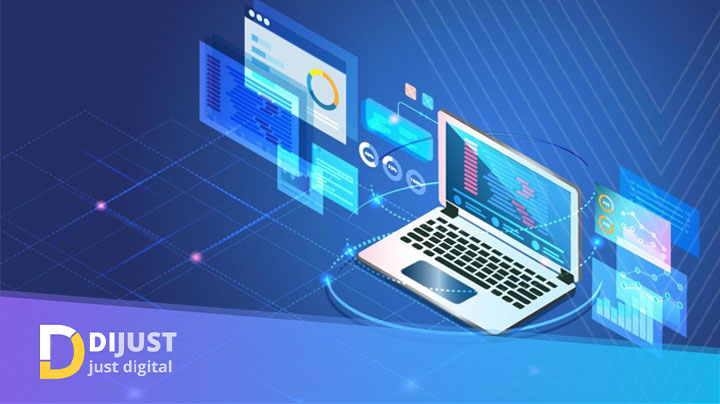5 Hot Programming Trends — And 5 Going Cold
Technology evolves at a breakneck pace, and the programming landscape is no exception. Some trends rise to prominence, shaping the future of development, while others fade into obsolescence. In this article, we’ll explore five programming trends that are heating up in 2025—and five that are losing steam.
🔥 Hot Trends in Programming
1. AI-Driven Development
Artificial intelligence is revolutionizing the way software is built, tested, and deployed. With tools like OpenAI’s Codex, GitHub Copilot, and Meta’s Code Llama, developers can now write code faster and with fewer errors. AI is not just an assistant but is becoming an integral part of the software development lifecycle.
“AI will define the future of programming, not by replacing developers, but by augmenting their abilities.” — Andriy Zhurylo, Dijust Development.
Why It’s Hot:
- AI-powered code completion and debugging
- Automated testing and deployment
- AI-assisted low-code and no-code development
2. Rust’s Meteoric Rise
Rust has been voted the most loved programming language in Stack Overflow surveys for years, and now it’s finally seeing mainstream adoption. With its focus on memory safety and performance, Rust is becoming the go-to language for system-level programming, replacing C and C++ in many areas.
“Rust’s focus on safety without sacrificing speed makes it a game-changer in modern software engineering.” — Linus Torvalds
Why It’s Hot:
- High performance without garbage collection
- Memory safety without runtime overhead
- Increasing adoption in web assembly, embedded systems, and OS development
3. Quantum Computing Programming
Quantum computing is no longer just theoretical; it’s becoming a reality with frameworks like IBM’s Qiskit, Google’s Cirq, and Microsoft’s Q#. Although still in its infancy, quantum programming is set to redefine fields like cryptography, material science, and AI.
“We are on the verge of a new computing revolution, one where quantum mechanics will dictate the rules.” — Richard Feynman (theoretical physicist)
Why It’s Hot:
- Quantum supremacy experiments show real-world applications
- Tech giants heavily investing in quantum R&D
- New quantum algorithms emerging for optimization and AI
4. Web3 and Decentralized Applications (DApps)
Despite crypto market fluctuations, Web3 is evolving beyond hype. Blockchain development languages like Solidity and Rust are fueling the rise of decentralized applications (DApps), smart contracts, and DeFi platforms.
“The Web3 revolution is about giving power back to the people by decentralizing control.” — Vitalik Buterin, Ethereum co-founder
Why It’s Hot:
- Increased adoption of decentralized finance (DeFi)
- Growth in NFTs and smart contracts
- More scalable and energy-efficient blockchain solutions
5. Edge Computing & Serverless Architectures
With the explosion of IoT devices and 5G networks, edge computing and serverless architectures are reducing latency and improving efficiency. AWS Lambda, Google Cloud Functions, and Azure Functions are becoming standard for scalable, cost-effective applications.
“Serverless computing is like electricity: you use what you need, when you need it, without worrying about the infrastructure.” — Werner Vogels, CTO of Amazon
Why It’s Hot:
- Reduces costs by eliminating idle server time
- Improves performance for real-time applications
- Supports massive scalability with minimal operational overhead
❄️ Cold Trends in Programming
1. PHP’s Decline in Web Development
Once the backbone of the web, PHP is losing favor to modern frameworks like Node.js, Python’s Django, and Go-based web servers. While still powering WordPress, PHP’s influence is shrinking in enterprise and startup development.
“PHP is a perfectly fine language. But why settle for fine when you can have great?” — Rasmus Lerdorf, creator of PHP
Why It’s Going Cold:
- Slower performance compared to modern web stacks
- Declining popularity among new developers
- Limited scalability for high-performance applications
2. Java’s Struggle in Cloud-Native Development
While Java remains a staple in enterprise applications, it’s struggling to stay relevant in cloud-native environments. Developers are shifting toward Go, Rust, and Python for their efficiency in microservices and Kubernetes.
“Java was designed for the 90s, and it shows. Modern development demands agility that Java often lacks.” — Anonymous Cloud Architect
Why It’s Going Cold:
- High memory consumption and slow startup times
- Alternatives like Kotlin, Go, and Rust gaining traction
- Complexity in containerized and serverless deployments
3. The Decline of Monolithic Architectures
Large, monolithic applications are being replaced by microservices and containerized solutions. Companies are prioritizing flexibility, scalability, and maintainability over traditional monolithic stacks.
“Microservices are not just an architecture; they are an organizational philosophy.” — Martin Fowler, software development expert
Why It’s Going Cold:
- Difficult to scale compared to microservices
- Increased downtime and maintenance overhead
- Slower feature rollout in agile environments
4. Traditional Relational Databases Losing Ground
Relational databases like MySQL and PostgreSQL still have their place, but NoSQL solutions such as MongoDB, Cassandra, and Firebase are gaining dominance in real-time applications, IoT, and big data.
“The future is not just structured data; it’s semi-structured and unstructured data as well.” — Jeff Dean, Google AI lead
Why It’s Going Cold:
- Struggles with horizontal scalability
- NoSQL offers better performance for distributed applications
- Cloud-native databases taking over enterprise solutions
5. The Decline of Manual Testing
With the rise of automated testing frameworks and AI-driven testing tools, manual testing is becoming less relevant. Selenium, Cypress, and AI-based test automation tools are reducing the need for human testers.
“If your testing isn’t automated, you’re already behind.” — Elon Musk
Why It’s Going Cold:
- AI-driven automation reduces human error
- Faster test execution and CI/CD integration
- Companies prioritizing efficiency over manual quality assurance
Conclusion
The world of programming is constantly evolving. While some technologies and methodologies rise to meet the demands of modern development, others fade into history. AI-driven development, Rust, quantum computing, Web3, and serverless architectures are shaping the future, while PHP, Java in cloud environments, monolithic applications, relational databases, and manual testing are gradually being left behind.
For developers, staying ahead means adapting to these shifts and continuously learning new skills. As Alan Kay once said:
“The best way to predict the future is to invent it.”
Which of these trends do you see dominating the next decade? Let us know your thoughts!

